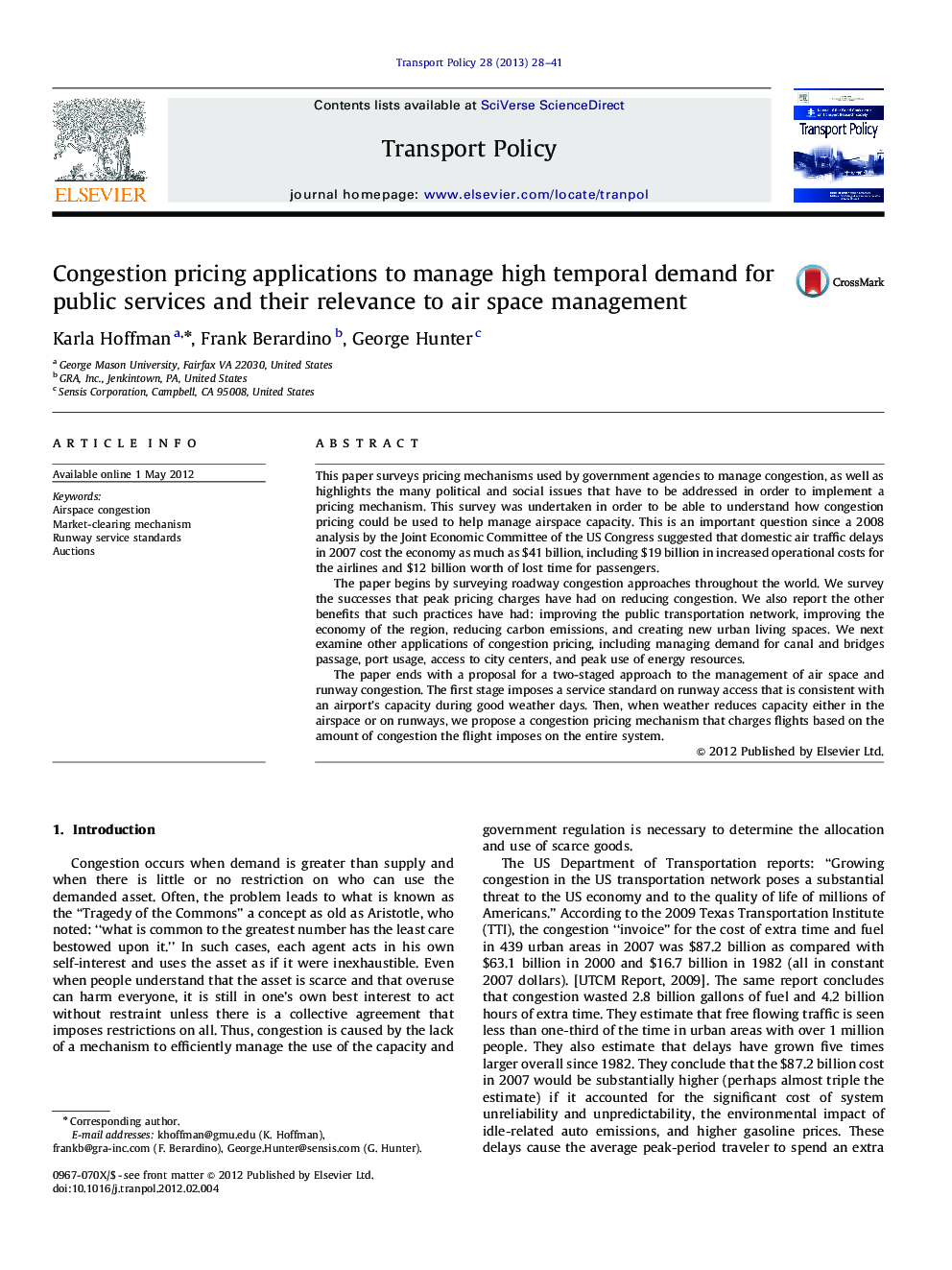| Article ID | Journal | Published Year | Pages | File Type |
|---|---|---|---|---|
| 1064975 | Transport Policy | 2013 | 14 Pages |
This paper surveys pricing mechanisms used by government agencies to manage congestion, as well as highlights the many political and social issues that have to be addressed in order to implement a pricing mechanism. This survey was undertaken in order to be able to understand how congestion pricing could be used to help manage airspace capacity. This is an important question since a 2008 analysis by the Joint Economic Committee of the US Congress suggested that domestic air traffic delays in 2007 cost the economy as much as $41 billion, including $19 billion in increased operational costs for the airlines and $12 billion worth of lost time for passengers.The paper begins by surveying roadway congestion approaches throughout the world. We survey the successes that peak pricing charges have had on reducing congestion. We also report the other benefits that such practices have had: improving the public transportation network, improving the economy of the region, reducing carbon emissions, and creating new urban living spaces. We next examine other applications of congestion pricing, including managing demand for canal and bridges passage, port usage, access to city centers, and peak use of energy resources.The paper ends with a proposal for a two-staged approach to the management of air space and runway congestion. The first stage imposes a service standard on runway access that is consistent with an airport's capacity during good weather days. Then, when weather reduces capacity either in the airspace or on runways, we propose a congestion pricing mechanism that charges flights based on the amount of congestion the flight imposes on the entire system.
